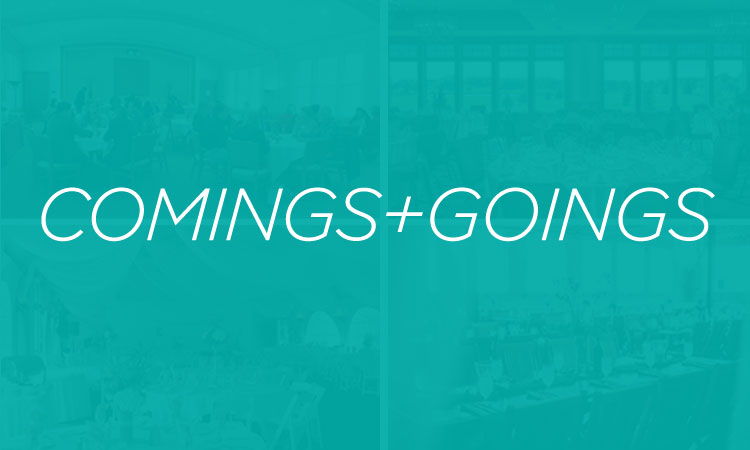With a BA degree from the University of St. Thomas, Tara has over eight years experience in the hospitality industry. For the past five years, she has acted as sales manager at the Earle Brown Heritage Center, working in all markets, including corporate, associations and social. Tara is also responsible for sales, contracting and detailing events. Tara lives with her husband and two children in Lino Lakes.
Essentials for a Successful Tradeshow
As Sales Director for Earle Brown Heritage Center, Tara Meyer has traveled around the block more than a few times when it comes to tradeshows. From the viewpoint of both an attendee and a professional who works with planners, Tara is highly qualified to reveal an insider’s perspective on best practices for any planner approaching the daunting task of putting together a trade show.
Q. What’s your experience with tradeshows?
A. I am responsible for detailing the client's tradeshows at Earle Brown Heritage Center. In addition, I’m a member of MPI and MSAE and attend the tradeshows annually. For Earle Brown, we generally attend five to six wedding trade shows every year.
Q. What is the most important task for a planner when putting together a tradeshow?
A. The most important thing is thinking about size. That means taking a look at last year’s tradeshow and determining what, if anything, should change. It also means asking some questions. For example, how many vendors will there be? Are we seeing growth from last year’s event? What did we like about previous floor layouts? What did we dislike? It’s always best to examine those things and make decisions in the beginning. I’m also a firm believer in making changes. When things become too routine, it might be time to shake things up.
Q. Are there details that planners often overlook?
A. They’ll often forget to think about logistics of food service - if their tradeshow is going on inside a ballroom, do they want food service in the room or outside the room? While attendees may enjoy the opportunity to snack while touring the show, the planner has to remember that they’re losing exhibit space when food service is inside the room. They also need to be mindful of having enough space for attendees to walk around. This is part of the process we help guide them through.
Q. When you meet with a planner, what information should they have prepared for you?
A. The first questions I always ask - are there pipe and drape booths, and what size are they? This can impact how many booths fit into the room. They also need to be mindful of extras that exhibitors may want such as electrical. Some want furniture. Will the planner be providing, will the exhibitor be providing, or is the expectation that the venue will provide?
Q. What’s the biggest mistake planners make and how can they avoid it?
A. Failing to give their exhibitors all the information they can up front. For example, asking the vendor if they’re going to need electricity, then informing them about any related charges. Being as detailed as possible at the start saves time, avoids frustration and makes the trade show run smoothly.
Q. Any other tips or advice?
A. It’s important to remember to not be afraid to talk about new ideas from one year to the next. Even if it’s something as simple as running the rows differently, be mindful of what your space can offer.
Find Mentioned Suppliers
Related Suppliers & Featured Content Advertise with meetingpages and create a complete profile for your facility, attraction, activity or service.

Falleluja – 10 MN Conference Centers That Deliver Unforgettable Experiences
Spotlight | By Casey Romano, Publisher | July 16, 2025
Looking for fresh venues to elevate your next meeting, convention, or corporate retreat? We've gathered ten of Minnesota’s most dynamic, amenity-rich destinations where unforgettable events are always on the agenda. From lakeside escapes to urban sophistication, these venues deliver both atmosphere and capability. Read more...

The City of Brooklyn Center Announces Event and Convention Center Renaming
Comings and Goings | August 16, 2022
On June 13th, the Brooklyn Center City Council voted to rebrand the Earle Brown Heritage Center to Heritage Center of Brooklyn Center. Read more...

Cool Schools — Our Favorite Minnesota Training Centers, Classrooms & Academic Facilities
Spotlight | September 10, 2019
Your assignment? Study up on the seemingly countless Minnesota venues where you can host your next training event and learn which ones are the best. Read more...

Know Your Place — 10 Best Trade Show Spaces in Minnesota
Spotlight | March 12, 2019
As any planner knows, there are a million things to consider when choosing a venue for a trade show. Location, size, accessibility, floor plans, traffic flow, and much, much more. If you’re in the midst of the madness of planning a trade show, stop stressing. We’ve found 10 of the best trade show spaces in Minnesota just for you. Read more...











